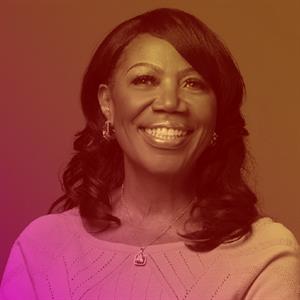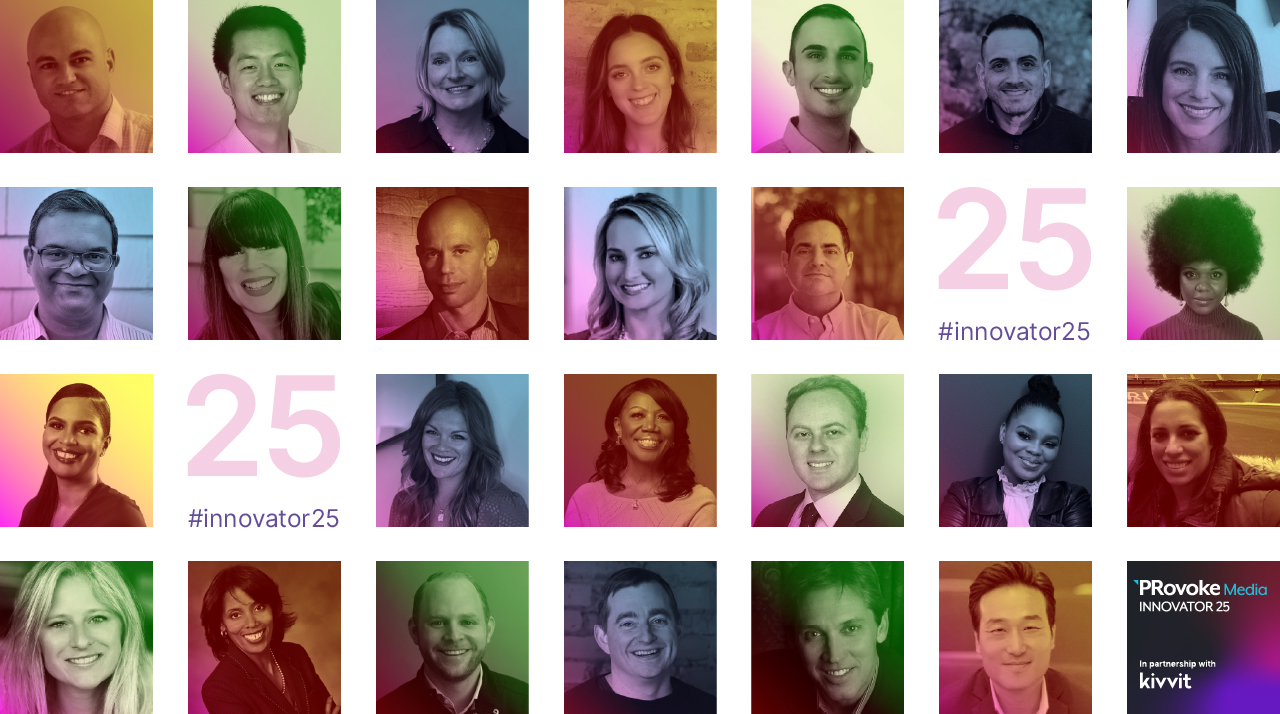
Mary Stutts
Global Chief Inclusion and Health Equity Officer
Real Chemistry (formerly W2O Group)
San Francisco, CA
Hometown: Chicago, IL
“While most organizations have created diverse workforces, they have been far slower to adopt inclusive cultures that ensure diverse employees are valued and respected, treated fairly and have access to the same career development and leadership opportunities."
To a large degree, Mary Stutts ties DE&I to accountability. In 2020, Stutts conducted 10 Inclusive Leadership Workshops for companies focused on helping develop leaders to be individually accountable for creating cultures of inclusive diversity — and she plans to conduct up to three times as many this year. And while her work with organizations includes the full range of research and analysis, it also results in the creation of a customized action plan to remedy barriers to DE&I — all which Stutts says is a departure from traditional training that leaves participants to their own devices. “If you do a training, people feel like they’ve checked the box and can move on. But there is no accountability or follow through," she says. Stutts ensures follow-through by requiring strategic plans are developed at every level.
Do you think the global pandemic has made the industry more innovative? More innovative. The pandemic has made us more innovative by accelerating the use of digital, technology and omnichannel communications and marketing to service our clients.
What professional accomplishment are you most proud of?
I am most proud of what I’ve done to help underserved people gain access to programs that better their lives, such as when I lead Genentech's first Diversity in Clinical Trials Initiative and Comcast NBCU California's Internet Essentials Program to provide digital access to low-income students and senior citizens. As Stanford Health Care's first Chief of Inclusion, Diversity & Health Equity, I curated an Inclusive Leadership Workshop to ensure that diverse employees at all levels of an organization experience culturally appropriate leadership, are treated fairly and have access to the same opportunities as everyone else.
I am also extremely proud of the work I’m doing focusing on the workforce of the future through The Center for Excellence in Life (TCEL), a 501c3 I founded in 2004 that empowers underrepresented youth and women through life skills development, mentoring, career counseling and social and business etiquette training. TCEL’s nationally recognized virtual Internship Program is annually tapped by major corporations to staff entry-level employees in STEM, communications, fashion, digital entertainment, finance and more.
We're at a pivotal moment on the future of the office and how we work. How would like to see 'office/work culture' evolve?
The pandemic has had such a negative impact on working women, especially women of color, whose jobs often require them to be in a workplace without the support of childcare. As a result, many of those women have been forced out of the workforce.
We must evolve our office/work culture to offer policies that ensure women continue to thrive in their careers, which is particularly critical for our industry because women comprise the majority of the workforce. These policies should include more flexible work schedules and the ability to work remotely, ensuring access to childcare and paying women more equitably so we do not lose the gains we’ve made over the years.
How can the PR industry make real progress in diversity, inclusion and equity?
This is an area where there is still much our industry needs to do. While most organizations have created diverse workforces, they have been far slower to adopt inclusive cultures that ensure diverse employees are valued and respected, treated fairly and have access to the same career development and leadership opportunities, which is a major reason why they leave organizations. Color still stays at the bottom.
DE&I is not consistently highlighted in company communications, leaders don’t talk about it and resources/best practices are not shared and are not visible in DE&I-related dialogues with frontline employees. There is no comprehensive strategy for leaders to understand, embrace or celebrate DE&I and/or it is not part of the organization’s values or mission.
I see real progress as:
• Development of inclusion plans that require leaders at all levels to create guidelines and assure career development conversations happen with all direct reports at every level of the organization
• Greater support for and involvement in affinity groups, which facilitate an inclusive culture. In addition, senior leaders should participate in affinity groups that don’t represent their own affinity to build relationships and increase their engagement with diverse employees.
• Enhanced recruitment and inclusive career development opportunities, which result in greater talent retention. More diverse employees should be promoted, mentored, assigned to special projects and given time to participate in affinity group committee roles.
• Ensuring a steady pipeline of diverse and prepared employees by partnering with educational institutions as early as high school through college to develop internships and fellowships that expose students to our professions.
What makes you most excited or proud to be part of the PR industry?
What has always drawn me to the industry from the very beginning of my career is the ability to provide information to people that positively impacts their lives. That could be about new and innovative therapies, public health developments or information about their career development or about health equity and inclusion. The ability to shape the narrative, tell the story and add the visuals that bring the messages home in a very real way is a capability our industry has honed really well. It continues to prove the value and need of our work.
What are your fears/concerns for our industry?
My main concern is not capturing the value of DE&I through our workforce and not routing out bias at all stages of our work and our clients’ work. Also, not maximizing our ability to really achieve health equity and overall equity and inclusion nationally and globally.
What inspires you? This could be a person, place, activity, etc.
The positive feedback that I get from people we have successfully communicated with, whether that’s patients, employees, community organizations, students or our corporate partners. It’s receiving letters of thanks from patients and knowing that they are more informed because of our great work in helping to tell a story. Our ability to have a positive impact is unlimited and benefits so many people, communities, organizations and even so many cities and countries when we do it correctly.
What are you thinking about most these days?
The importance of precision medicine. The real nirvana for health is providing precision medicine – the right diagnosis and the right treatment for the right patient at the right time. And that will not be possible until we diversify the human genome database. So my focus is on partnering across our industry, patient advocacy groups, communities and governments – much like we did with Operation Warp Speed during the pandemic – to assure diverse representation in the human genome database.
What is your idea of happiness?
Winding down after work with my daily five-mile walks while listening to music or positive messages. That’s my “me” time. Then coming back and curling up with either a good book or a good action movie.


 Podcasts
Podcasts Videos
Videos Profiles & Interviews
Profiles & Interviews Crisis Review
Crisis Review Coronavirus
Coronavirus Trend Forecasts
Trend Forecasts Social & Digital
Social & Digital Technology
Technology Consumer
Consumer Employee Engagement
Employee Engagement Sports Marketing
Sports Marketing  Global PR Agency Rankings
Global PR Agency Rankings Agencies of the Year
Agencies of the Year Innovator 25
Innovator 25 Creativity in PR
Creativity in PR Asia-Pacific Communication Index
Asia-Pacific Communication Index SABRE Awards
SABRE Awards PRovokeSummit Global
PRovokeSummit Global PRovoke Media Regional Series
PRovoke Media Regional Series Agencies of the Year
Agencies of the Year Roundtables
Roundtables Agency Playbook
Agency Playbook.jpg) All Jobs
All Jobs






